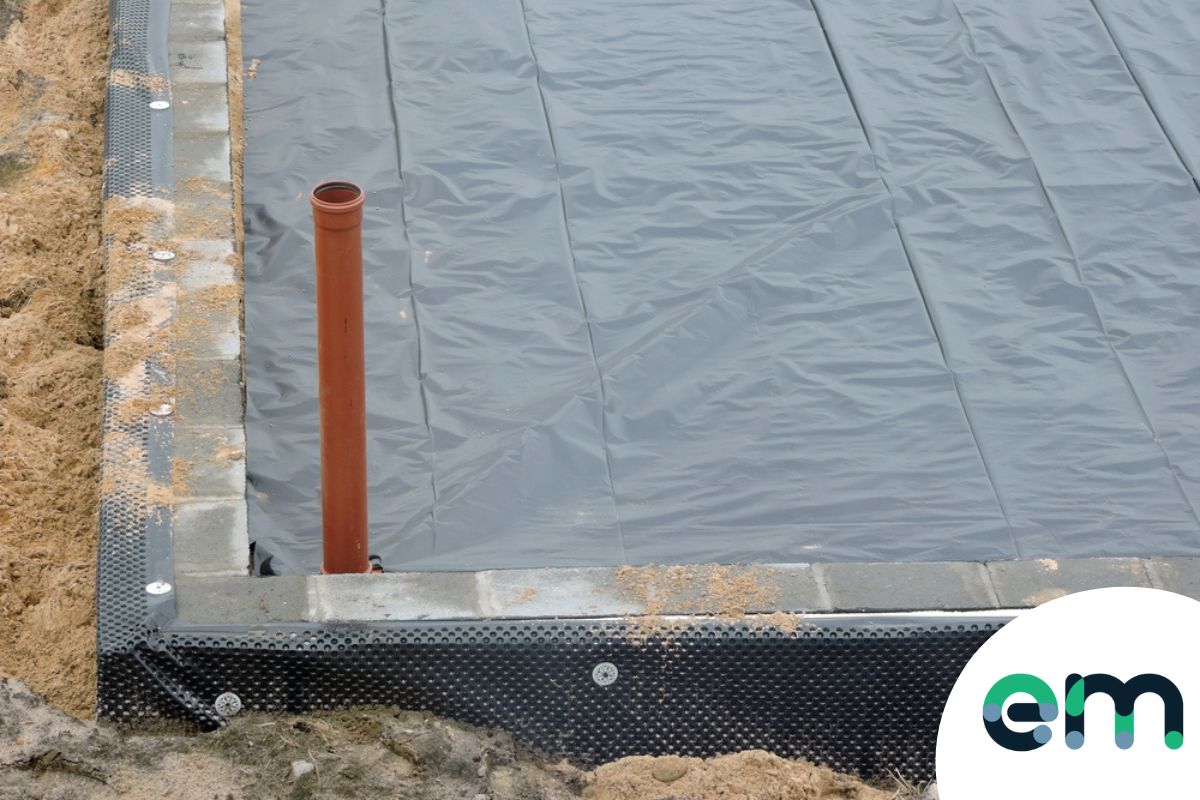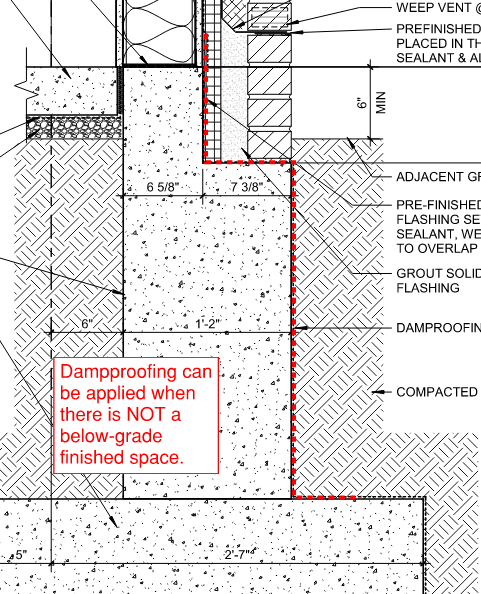How mould removal newcastle can enhance your indoor air quality
How mould removal newcastle can enhance your indoor air quality
Blog Article
Discovering the Numerous Techniques and Solutions for Effective Damp Proofing
Moisture in structures presents significant challenges to both structural stability and interior air top quality. Different techniques and services have actually emerged to battle this prevalent concern. From standard damp-proof membranes to cutting-edge chemical therapies, each approach provides unique benefits. Comprehending these choices is vital for efficient wetness control. Nonetheless, picking the ideal remedy depends upon details building problems and requirements, triggering further exploration into the most reliable moist proofing techniques available.
Recognizing the Reasons For Dampness
Dampness can emerge from various sources, comprehending these reasons is essential for reliable removal. Generally, dampness originates from 3 primary resources: increasing moist, passing through wet, and condensation. Increasing moist occurs when groundwater takes a trip up via porous products, such as block or stone, often due to a lack of a reliable obstacle (damp removal newcastle). Penetrating moist is normally triggered by external aspects, including roof leaks, damaged seamless gutters, or harmed wall surfaces, enabling water to penetrate a residential property. Condensation, on the other hand, arises from excess wetness in the air, frequently exacerbated by bad ventilation and temperature level differences, leading to water droplets basing on surfaces. Identifying these underlying concerns is crucial, as each kind of dampness needs a customized technique for remediation. Proper evaluation helps in establishing one of the most efficient services, inevitably guarding the structural honesty of a building and boosting interior air top quality
Conventional Damp-Proof Membranes

Chemical Damp-Proofing Solutions
Chemical damp-proofing solutions supply an ingenious approach to avoid moisture intrusion in structures. These methods generally involve the application of fluid chemicals that pass through masonry and create an obstacle versus climbing damp. Generally made use of chemicals include silanes, siloxanes, and various other water-repellent agents that respond with surface area materials to develop a hydrophobic layer.The application procedure generally calls for exploration openings right into the walls, injecting the chemical option, and permitting it to treat. This technique is particularly advantageous for older frameworks where standard damp-proof membrane layers might be impractical. Chemical damp-proofing can be much less disruptive and more economical than substantial renovation projects.While effective, these solutions depend on proper application and ecological conditions for peak efficiency. mould removal newcastle. Routine maintenance and tracking are vital to ensure the longevity of the damp-proofing therapy. On the whole, chemical damp-proofing represents a versatile alternative for securing buildings against moisture-related damages
Tooth Cavity Wall Surface Building Strategies
Cavity wall building methods provide various benefits, particularly in dampness control and energy effectiveness. By including an air void in between 2 layers of masonry, these walls properly mitigate water ingress while boosting insulation. This combination not only secures structures from wetness yet likewise adds to reduced energy usage.
Advantages of Dental Caries Wall Surfaces
When considering reliable wet proofing approaches, the advantages of tooth cavity wall surfaces stand apart prominently. Cavity wall surfaces contain 2 separate layers, creating an air void that effectively lowers moisture penetration. This design reduces the threat of wetness, as the external wall surface functions as an obstacle versus rainfall and water access. Additionally, dental caries walls improve thermal insulation, which contributes to power performance by lowering warm loss. They also offer audio insulation, assisting to produce a quieter indoor atmosphere. The air space permits for air flow, which helps in wetness control and minimizes the likelihood of mold development. These benefits not just improve the overall comfort of a building however likewise add to its durability and architectural integrity.
Wetness Control Methods
Efficient dampness control approaches are critical in cavity wall construction to ensure lasting security versus moisture. One key method involves the unification of weep openings, which facilitate water drain from the cavity, avoiding buildup. Additionally, using breathable membrane layers can assist handle dampness degrees while allowing trapped vapor to get away. Proper placement of insulation is also important, as it needs to not block water drainage paths. Guaranteeing that the outer fallen leaves of the cavity wall are constructed with waterproof products enhances total toughness. Regular upkeep checks are vital to recognize any clogs or damages early, safeguarding the framework's honesty. Inevitably, a combination of these techniques develops a robust defense versus dampness invasion in cavity walls.
Insulation and Energy Effectiveness
Insulation plays an essential role in improving energy efficiency within cavity wall building and construction. By integrating protecting products, these walls produce a thermal barrier that reduces heat loss and reduces power intake. Efficient insulation not only aids keep a stable indoor temperature yet also minimizes the risk of dampness, as it avoids condensation within the wall dental caries. Various strategies, such as the use of rigid foam boards or mineral wool, can be utilized to achieve suitable insulation efficiency. Additionally, appropriate installation is vital to assure that gaps and gaps are lessened, which can otherwise jeopardize power performance. Eventually, a well-insulated dental caries wall surface contributes greatly to general sustainability and decreases cooling and heating prices for property owners.
Exterior Damp Proofing Methods
Exterior damp proofing methods are necessary for shielding frameworks from moisture infiltration. Two reliable techniques consist of the application of water-proof membranes and the installment of French drains. These options assist mitigate water accumulation and preserve the stability of structures.
Waterproof Membrane Layer Application
While numerous techniques exist for stopping dampness access, the application of water resistant membranes remains a very reliable external damp proofing technique. These membranes are usually made from materials such as polyethylene, rubber, or customized asphalt, supplying a durable obstacle against water infiltration. The installment procedure involves applying the membrane layer to the external surface areas of foundations or wall surfaces, ensuring complete protection to stop leakages. Appropriate adhesion and securing at joints are vital to making the most of performance. Water-proof membranes can be used in different kinds, consisting of fluid layers and sheet membranes, permitting flexibility based on the particular needs of the framework. This technique not only secures buildings from moisture but likewise enhances their long life and architectural integrity.
French Drain Installment
One reliable approach for taking care of groundwater and protecting against wetness accumulation around a building's foundation is the setup of a French drainpipe. This drain system includes a trench loaded with gravel and a perforated pipeline that reroutes surface water away from the structure. Appropriate setup requires mindful planning, guaranteeing that the drain inclines away from the structure to facilitate optimal water flow. In addition, the place of the drainpipe is important; it should be placed in areas vulnerable to pooling or excess moisture. Routine maintenance, consisting of clearing particles from the crushed rock and guaranteeing the pipeline stays unhampered, is vital for long-term performance. Eventually, a well-installed French drain can substantially decrease the threat of water-related problems in foundations and cellars.
Inside Waterproofing Techniques
Inside waterproofing techniques are vital for protecting a structure's interior from dampness infiltration and possible water damage. These methods generally entail the application of specialized materials and strategies designed to create a dampness obstacle within the structure. One typical strategy is the use of water resistant layers or sealants on walls and floorings, which avoid wetness from penetrating surfaces.Additionally, installing indoor drainage systems, such as sump pumps, can efficiently handle water build-up in basements and creep rooms. An additional method involves making use of vapor barriers, which are set up to prevent wetness motion from the ground right into living spaces.Moreover, attending to any type of splits or voids in wall surfaces or structures with ideal sealers assures a complete defense versus water intrusion. By applying these indoor waterproofing methods, home proprietors can greatly reduce the danger of mold development, architectural damage, and various other moisture-related problems. Proper implementation of these strategies is essential for long-term security and structure integrity.
Regular Upkeep and Examination Practices
Normal maintenance and evaluation practices are essential for assuring the lasting performance of moist proofing services in any structure. Routine checks enable homeowner to recognize early signs of dampness invasion, such as peeling off paint, mold and mildew growth, and stuffy smells. These indicators can signify underlying issues that require prompt attention.Inspections ought to be conducted a minimum of annually, concentrating on susceptible locations like basements, creep spaces, and outside wall surfaces. Throughout these assessments, building proprietors must take a look at sealers, water drainage systems, and ventilation to validate they work correctly.Additionally, keeping downspouts and seamless gutters is necessary, as blocked systems can cause water accumulation near the foundation. Applying a normal upkeep schedule, together with prompt repairs, can significantly expand the lifespan of moist proofing measures and safeguard the architectural honesty of the structure. Proactive actions inevitably add to the overall health and wellness and safety and security of the living environment.
Frequently Asked Concerns
How Much Time Does Damp Proofing Generally Last?
The duration of moist proofing performance differs, commonly lasting between 20 to 50 years. Factors such as application high quality, ecological problems, and upkeep techniques greatly influence the longevity of the damp proofing therapy.

Can I Damp Proof My Home Myself?
The individual contemplated the expediency of DIY damp proofing. With proper research and the best materials, it is feasible. Nonetheless, they additionally recognized the importance of specialist advice to guarantee resilient effectiveness and stop future concerns.
What Are the Indicators of Inadequate Damp Proofing?
Signs of inadequate wet proofing consist of consistent stuffy odors, visible mold and mildew development, peeling paint, wet patches on walls, and timber decay - mould treatment newcastle. Home owners need to attend to these issues promptly to protect against additional damage and wellness worries
Does Damp Proofing Affect Indoor Air Quality?

How Much Does Expert Damp Proofing Cost?
Expert wet proofing costs differ considerably, commonly ranging from $1,000 to $5,000 relying on the residential or commercial property's dimension, the degree of the wet issue, and selected approaches. Each situation needs a customized analysis for accurate prices. Generally, dampness originates from three main resources: climbing damp, permeating moist, and condensation. When taking into consideration effective damp proofing techniques, the benefits of dental caries wall surfaces stand out prominently. Outside damp proofing methods are necessary for protecting structures from wetness seepage. While numerous methods exist for stopping dampness access, the application of water-proof membrane layers stays a very efficient outside moist proofing method. Signs of ineffective moist proofing include persistent mildewy smells, noticeable mold growth, peeling paint, damp spots on wall surfaces, and timber degeneration.
Report this page